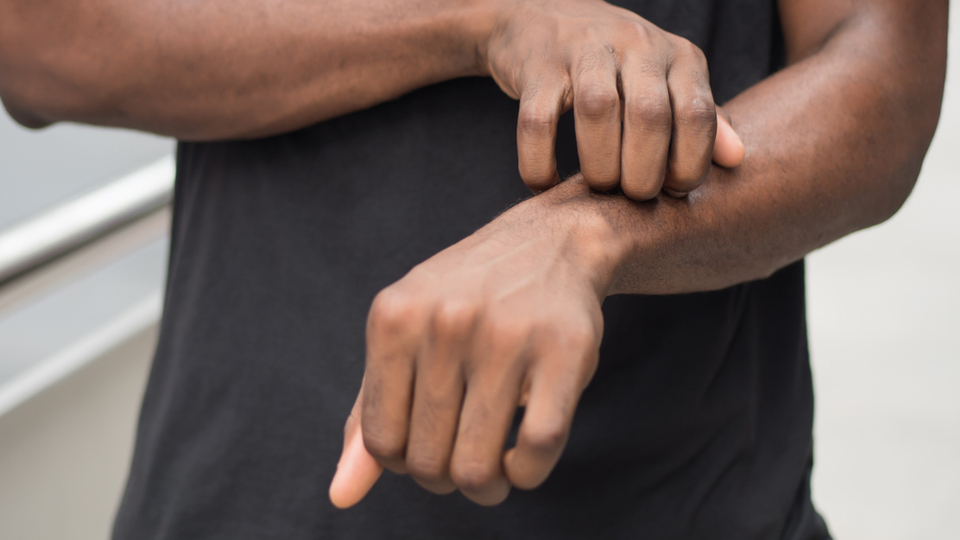Research Trend Report: Why More Eczema Patients are Turning to…
Learn what’s new and exciting in eczema research from the National Eczema Association research team.

Published On: Oct 1, 2021
Last Updated On: Feb 3, 2025
The NEA research team has published its third paper on the out-of-pocket (OOP) costs of atopic dermatitis (AD) in the United States – this time in the Archives of Dermatological Research. The first publication revealed how much money Americans with AD spend OOP to manage their condition. The second publication established a correlation between increased OOP costs and increased severity of AD.
Based on a survey of NEA’s eczema patient and caregiver community, this paper characterized the categories and impacts of out-of-pocket (OOP) healthcare expenses associated with atopic dermatitis (AD) and Black Americans. The findings in this paper, as in previous, have been analyzed in collaboration with researchers Raj Chovatiya, MD, PhD (Northwestern University) and Jonathan Silverberg, MD, PhD, MPH (The George Washington University School of Medicine and Health Sciences).
Previous studies have established that Black individuals in the United States (U.S.) have a higher prevalence of AD and often experience more treatment-resistant disease.1-4 The NEA research team hypothesized that Black racial identity is associated with unique categories of OOP healthcare costs related to AD and increased financial impact.
In the study, NEA researchers found that “Black respondents with AD were significantly more likely to report OOP costs for prescription medications both covered and not covered by insurance, emergency room visits and outpatient laboratory testing.”5 The study also found that more “Black individuals also reported OOP costs for office visit co-pays and deductibles, a variety of over-the-counter medications, hygiene products, childcare and transportation.”5 Despite elevated OOP costs across a variety of AD healthcare categories, “Black respondents were more likely to have a lower household income than their non-Black counterparts and they were also more likely to report a severe or devastating financial impact on household finances. Black race itself was found to be a predictor of harmful financial impact among individuals with AD.”5
The research team explored the demographic differences between Black and non-Black individuals with AD to better understand the disparity in their financial OOP burdens. Black vs. non-Black individuals with AD were more likely to:
Details from the study also demonstrated key differences in the impact of OOP expenses associated with AD on Black vs. non-Black individuals with AD (including caregivers).5 More Black vs. non-Black individuals with AD reported moderate (44.1% vs. 39.5%), severe (27.5% vs. 20.1%) and devastating (3.9% vs. 3.6%) household financial impact.5 There were also several data points that predicted a harmful financial impact of OOP expenses related to AD, including:
The study’s findings highlight the significant burden that OOP costs can place on Black Americans with AD and their caregivers, especially those living with severe disease. These insights are especially critical for healthcare professionals to recognize when establishing treatment plans that may have significant financial burden for their Black patients.
While no single intervention will lower OOP costs and improve access to AD care, a multifaceted strategy to optimize outpatient care could include:
The study highlights the need for healthcare providers to recognize the immense financial burden in this group of patients and proactively discuss OOP cost in tandem with efficacy and safety when considering a treatment plan. Because there is no “one-size-fits-all” treatment plan for AD, healthcare providers should engage in shared decision making with their AD patients – especially Black patients – and create an individualized treatment plan that is practical, feasible and financially responsible.
NEA’s research program is made possible through the participation of patients and caregivers. Learn about our ongoing efforts and see what surveys are ready for your input at NationalEczema.org/surveys.
References:
1. Silverberg JI , Paller AS. Association between eczema and stature in 9 US population-based studies. JAMA dermatology 2015;151:401 – 9.
2. Silverberg JI , Simpson EL. Association between obesity and eczema prevalence, severity and poorer health in US adolescents. Dermatitis. 2014; 25:172 – 81.
3. Silverberg JI, Hanifin J , Simpson EL. Climatic factors are associated with childhood eczema prevalence in the United States. The Journal of investigative dermatology. 2013;133:1752 – 9.
4. Silverberg JI , Simpson EL. Associations of childhood eczema severity: a US population-based study. Dermatitis. 2014; 25:107 – 14.
5. Chovatiya, R., Begolka, W.S., Thibau, I.J. et al. Financial burden and impact of atopic dermatitis out-of-pocket healthcare expenses among black individuals in the United States. Arch Dermatol Res (2021).